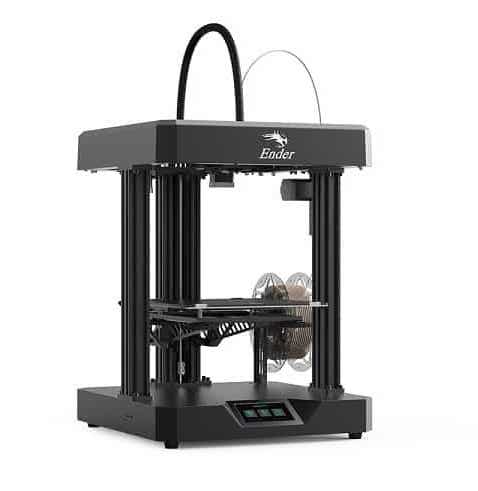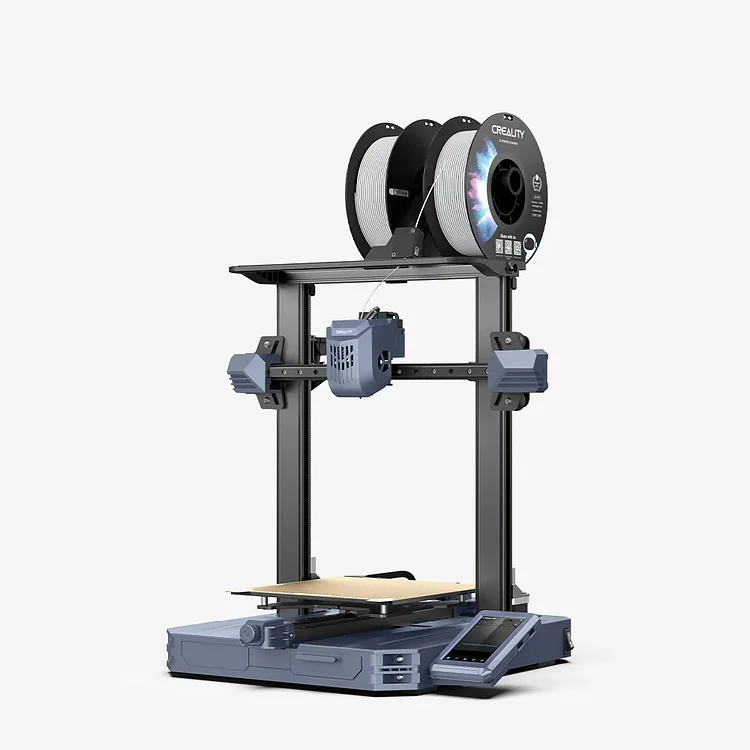Compare Ender 7 vs CR10 SE
Comparison between the best 3D printers
Choose the best 3D printer at the best price. The cheapest 3D printers are here.
Buy a 3D printer here with 3D Fila.
 |
 |
|
| Model | Ender 7[BUY Ender 7] |
CR10 SE |
| Printing Material | Filament | Filament |
| Buy Filament for Creality 3D Ender 7 | Buy Filament forCreality CR10 SE | |
| Estimated price | $429,00 | $386,00 |
| Manufacturer | Creality 3D | Creality |
| Release Year | 2021 | 2023 |
| Print Volume [mm] | 250x250x300 | 220x220x265 |
| Printer Size [mm] | 430x460x570 | 490x470x625 |
| Weight [kg] | 17,2 | 6,9 |
| Power Loss Recovery | YES | NO |
| Enclosed printer | NO | NO |
| Bed Leveling | Manual | |
| Filament End Sensor | YES | NO |
| Bed type | Heated | |
| Power supply system | Bowden | Direct Drive |
| Standard nozzle | 0,4 | 0,4 |
| Maximum Nozzle Temperature [°C] | 260 | 300 |
| Maximum Bed Temperature [°C] | 100 | 110 |
| Maximum printing speed [mm/s] | 250 | 600 |
| Filament holder | YES | YES |
| Camera for supervision | NO | NO |
| Recommended filaments | PLA, PETG, Tritan, Flex, ABS | PLA, PETG, PET, TPU, PA Wood, ABS, ASA, PA, PLA-CF |
| Recommended slicers | Cura, Simplify, Slic3r, IdeaMaker | Creality Print, Cura, Simplify3D, PrusaSlicer, Orca Slice |
| Maximum Resolution [mm] | 0,1 | 0,1 |
| Processor | Creality CR-FDM V.2.4.S1_V101 32bits | |
| Display | Display touchscreen 4,3'' | |
| Power Supply | 110/220V / 350W | |
| Connectivity | SD / USB | USB, Wifi |
| Operating systems | Windows, Mac, Linux | Windows, Linux, Macbook |
| Date of registration in the system | 2022-11-04 | 2024-07-02 |
| Release date | 2021 | 2023 |
| Extra features | Crealitys Ender 7 printer offers remarkable print speeds, utilizing CoreXY kinematics for precise and fast movement. With a 250x250x300mm build area, dual direct extruder, and custom hotend, the Ender 7 is capable of printing at high speeds, although quality may suffer on smaller prints. Assembly is relatively straightforward, but the machine is noisy and can get hot. Its true speed potential is most noticeable on larger prints, where it outperforms its competitors. | The Creality CR10 SE stands out for its printing speed of up to 600 mm/s, easy and intuitive assembly, direct extruder with double gears, hotend with hardened steel nozzle and ceramic heater, automatic leveling with CR-Touch and pressure sensor, and use of Creality OS firmware based on Klipper, with automatic input shaping calibration. It also includes Wi-Fi connectivity, a filament out-of-stock sensor and a robust structure with linear rails on the X and Y axes. |
| Support for multiple colors and materials (AMS and CFS) | NO | NO |
Notes * |
||
| Cost-benefit | 7 / 10 | 7 / 10 |
| Hardware | 2 / 10 | 2.1 / 10 |
| Tela | . | . |
| Print volume | 4 / 10 | 3 / 10 |
| Performance | 2 / 10 | 5 / 10 |
| [BUY Ender 7] |
Conclusion |
| In comparing the Creality Ender 7 and the CR10 SE 3D printers, we find distinct strengths and weaknesses that cater to different user preferences and printing needs. The Ender 7, while slightly higher in price, offers a larger print volume and impressive print speeds, especially benefitting those who focus on larger components. Its design, utilizing CoreXY kinematics, allows for efficient movements, making it suitable for users looking to achieve fast production. However, noise levels and heat generation can be considerations during operation, along with the requirement for manual bed leveling. On the other hand, the CR10 SE, which is more recent in release, provides features like automatic leveling and a direct drive extrusion system that enhance user experience, particularly for beginners or those who prioritize ease of setup. Its superior maximum print speed is complemented by its user-friendly design and Wi-Fi connectivity, making it a more modern option. From a cost-benefit perspective, the CR10 SE edges out the Ender 7, particularly for users looking for efficiency and convenience in their printing tasks. While both printers have similar qualifications in terms of resolution and filament compatibility, the CR10 SE's robust structure and advanced features contribute to a generally higher performance rating. Ultimately, the choice between the two boils down to specific printing needs: for larger, faster print jobs, the Ender 7 may be preferable, while the CR10 SE stands out for its ease of use and modern features, making it a superior option for many users, especially those new to 3D printing. |

